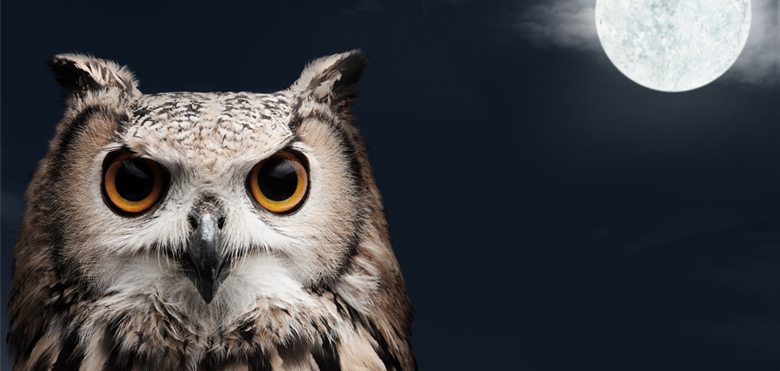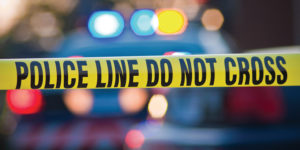Top 3 technologies that can “see” in the dark
When securing a location, it’s not uncommon to face challenging light conditions, especially if you don’t have easy access to artificial light sources. However, there are technologies that allow you to easily guard your perimeter, even in the dark.
Say you need to surveil a remote critical infrastructure, such as an oil and gas facility in the middle of the desert. Installing and running enough artificial lamps to allow a perfect vision even at nighttime would be an expensive investment for your business, taking resources away from other areas you might want to improve.
Thankfully, however, surveillance technology is not as dependent on light as it was twenty years ago. Below are three examples of technology which allow you to record detailed, sharp footage even in the worst light conditions.
To understand how the functions work, let’s take a look at the reason why visible-light cameras – and the human eye – have difficulty seeing in the dark.
It’s all in the photons
Light is made of particles called photons, named after the ancient Greek word phos, which means “light”. Our eyes are naturally sensible to photons, they record their presence and our brain puts together a picture based on the information the eyes collected. A visible-light camera works in the same way.
However, photons come in a wide range of wavelengths, of which only a small fraction of about 400 to 700 nano meters (nm) is visible to humans and visible light cameras. When the light is low, or near to none, there are fewer photons that can reach our sensors, therefore the brain and the visible light camera computer don’t have enough information to build a detailed picture.
The technologies we are about to illustrate, enable cameras to optimize the way their sensors collect information in the form of photons, either by enhancing their ability to create a picture from a small number of them, expanding their vision to wider wavelengths, or regulating the exposure of the sensors to the light.
-
Lightfinder
As the name suggests, Lightfinder technology is built to be very sensitive to the few visible light photons in low light areas; thanks to a combination of extremely sharp sensors and carefully tuned image processing, cameras with this technology can capture full-color images in extremely low light.
In fact, they can discern color in low light better than the human eye, which is particularly important when images are used for forensic purposes. The truer the colors, the better your chances of identifying a subject.
This result is achieved by a combination of optical components, such as a high-quality lens, a custom-selected image sensor optimized for surveillance, and digital image processing algorithms that are embedded in the system-on-chip.
-
OptimizedIR
While Lightfinder is great for low light conditions, when you need to secure an area in total darkness, you may want to choose a technology that can expand the wavelength of photons it can capture. Entering OptimizedIR, where IR stands for InfraRed.
Cameras that can use IR light for imaging have so called “day-and-night functionality”, or are “day-and-night cameras”, which means that during the day, they employ visible light to create pictures, but when light falls the night mode is triggered which expands the camera sensitivity to the infrared spectrum. This mode expands the camera sensitivity to the infrared spectrum.
To achieve this, cameras can employ either natural IR light, such as moonlight, or artificial light, from incandescent light bulbs or a dedicated IR light source, which can be built in the camera for extra discretion. The footage IR produces is not colorful, but in scales of grey.
-
Forensic WDR
We have seen a camera that sees in low light or in darkness, but what if you have to deal with extremely bright and extremely dark areas in the same frame? For example, a tunnel or a parking garage. In these situations, you can be forced to optimize the settings for just on one of the areas, potentially missing crucial details in the other.
When images are underexposed or overexposed it can be impossible to identify objects and people. The technology best fit for this scenario is Forensic Wide Dynamic Range (WDR), which solves the issue by applying multiple exposure levels, contrast enhancement, and advanced algorithms that lower noise and increase the image signal.
Getting back to photons, this technology assures that the camera doesn’t collect too many photons from the brighter areas, while at the same time reducing the noise resulting from the low concentration of photons in the darker ones. This way, you can place your cameras exactly where you need them, with no need to worry about difficult lighting.
In practice
There is no better way to understand a technology than see it at work in a real-life situation. For example, in 2018 Rock Hill Schools was looking to upgrade its campus’ video surveillance system, while aligning with its efforts to reduce energy consumption. Sustainability is an important part of the overall strategy at Rock Hill because it not only saves taxpayer money, but also reduces the school system’s carbon footprint.
A team of Rock Hill administrators determined that a “campus blackout” approach was effective in deterring crime and saving energy. However, the quality of traditional video footage on a dark campus can be an issue and decrease the effectiveness of identifying perpetrators. To tackle the problem, Rock Hill installed cameras equipped with Lightfinder, and OptimizedIR for the extreme lighting challenges.
The school was able to maintain its campus blackout approach without sacrificing safety and security. In fact, the security of the school buildings has been enhanced, with a lower number of incidents reported, and at the same time, they had significant electrical savings.
On the other hand, Forensic WDR was crucial for BH International Airport, Brazil, when it came to secure its new terminal in 2019. The new terminal has more than doubled the airport’s passenger capacity – from 10 million passengers a year to 22 million. More than US$ 260 million were invested in the project, including the expansion of the aircraft apron area and new parking spaces, and it called for additional security systems to be installed there. One of the technical challenges presented by monitoring the apron areas was dealing with reflections generated by concrete, but the problem was mitigated by WDR technology using Forensic Capture.
Beyond visible light
Technology allows cameras to go beyond the performance of the human eye, making it possible to channel the photons their lenses capture in the most optimized way possible. Whether you need to see in low light, total darkness, or have to deal with extremely different exposures in the same picture, a technology has been developed to aid you, and more are being researched and improved every year. Want to read more on technologies that makes a difference?




